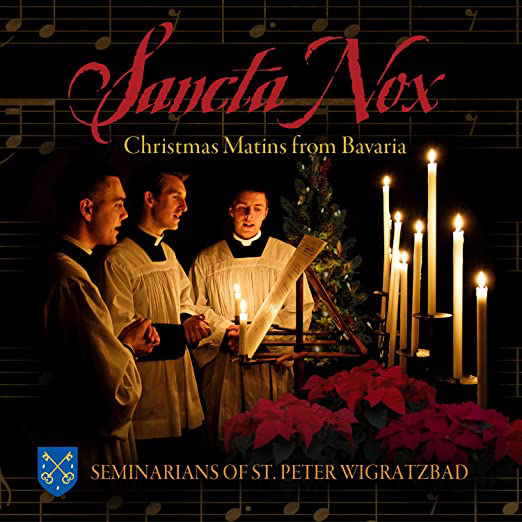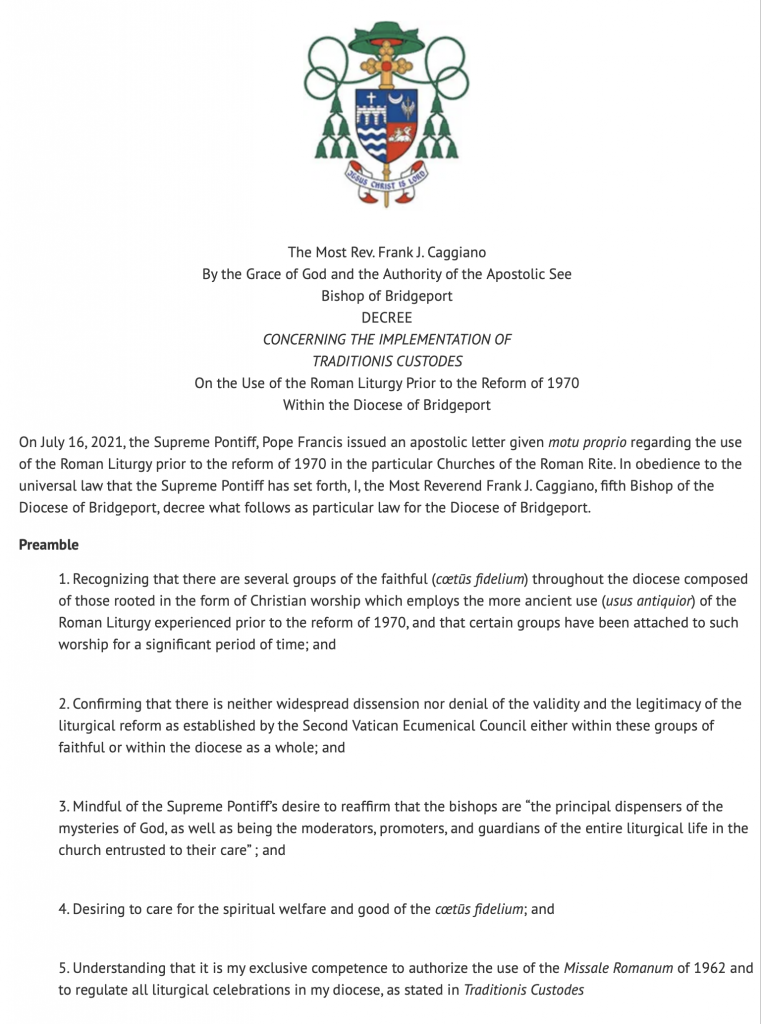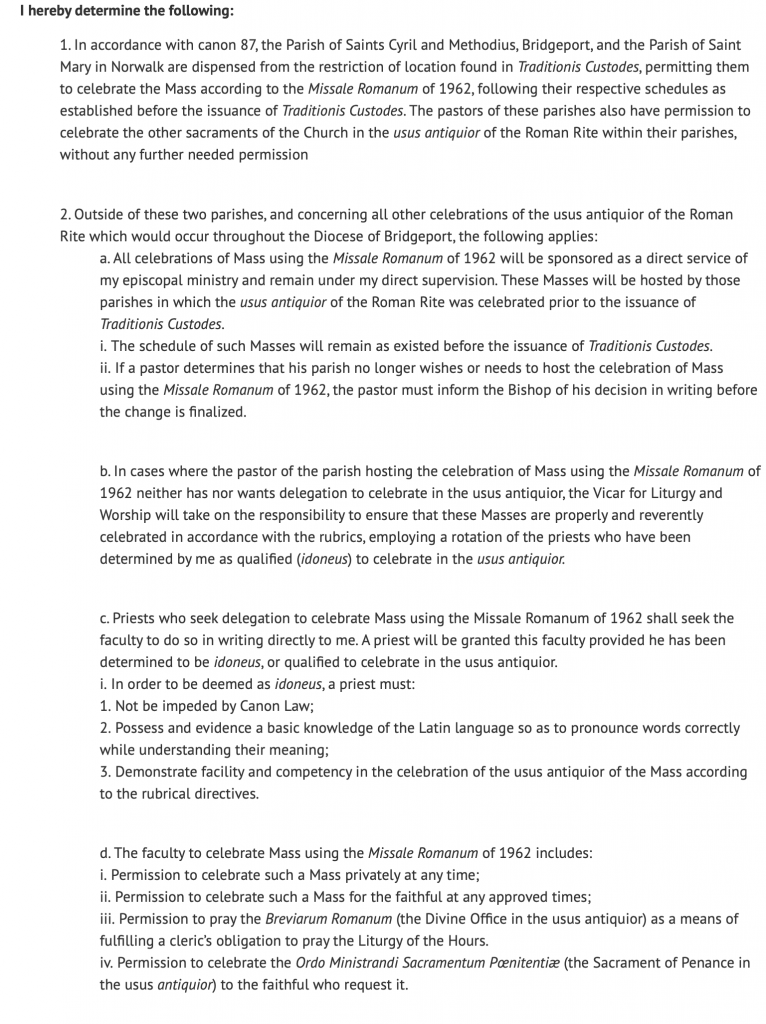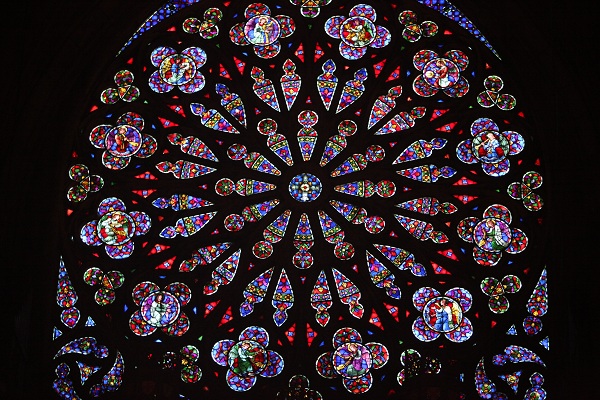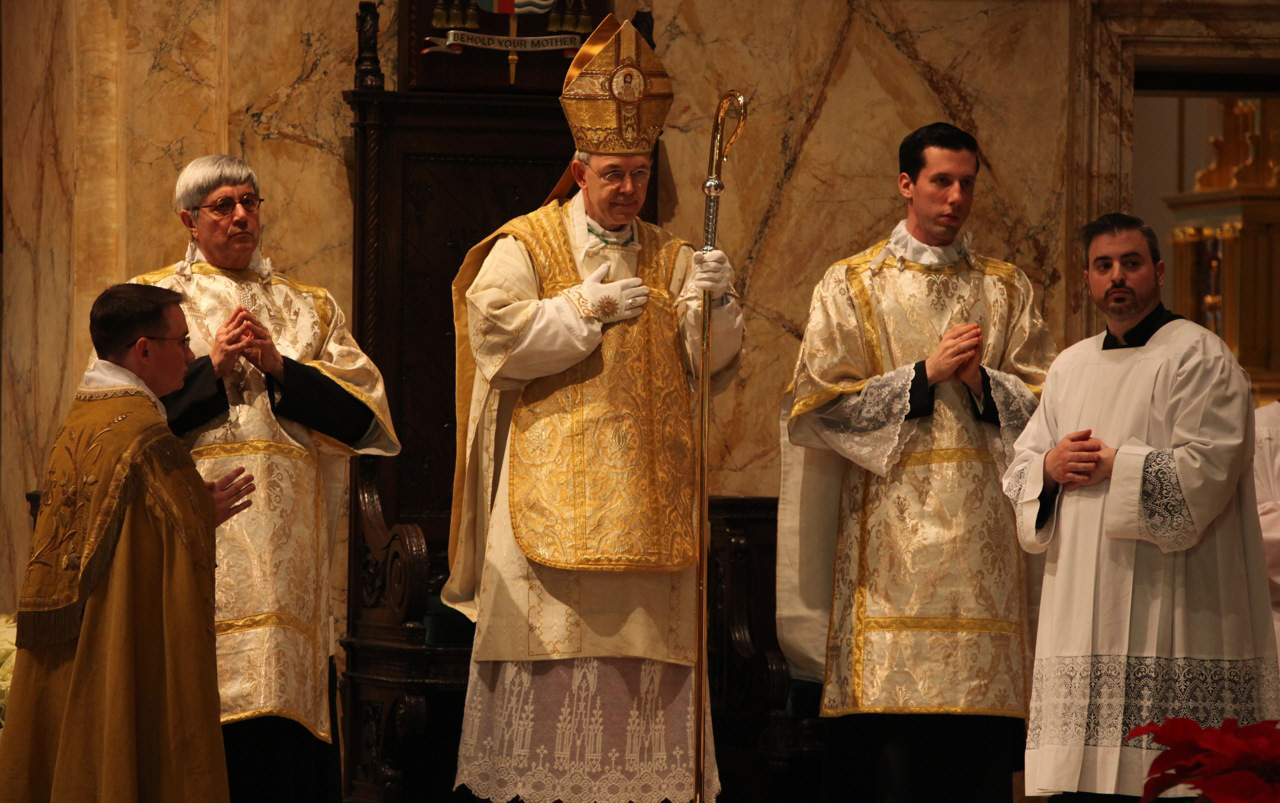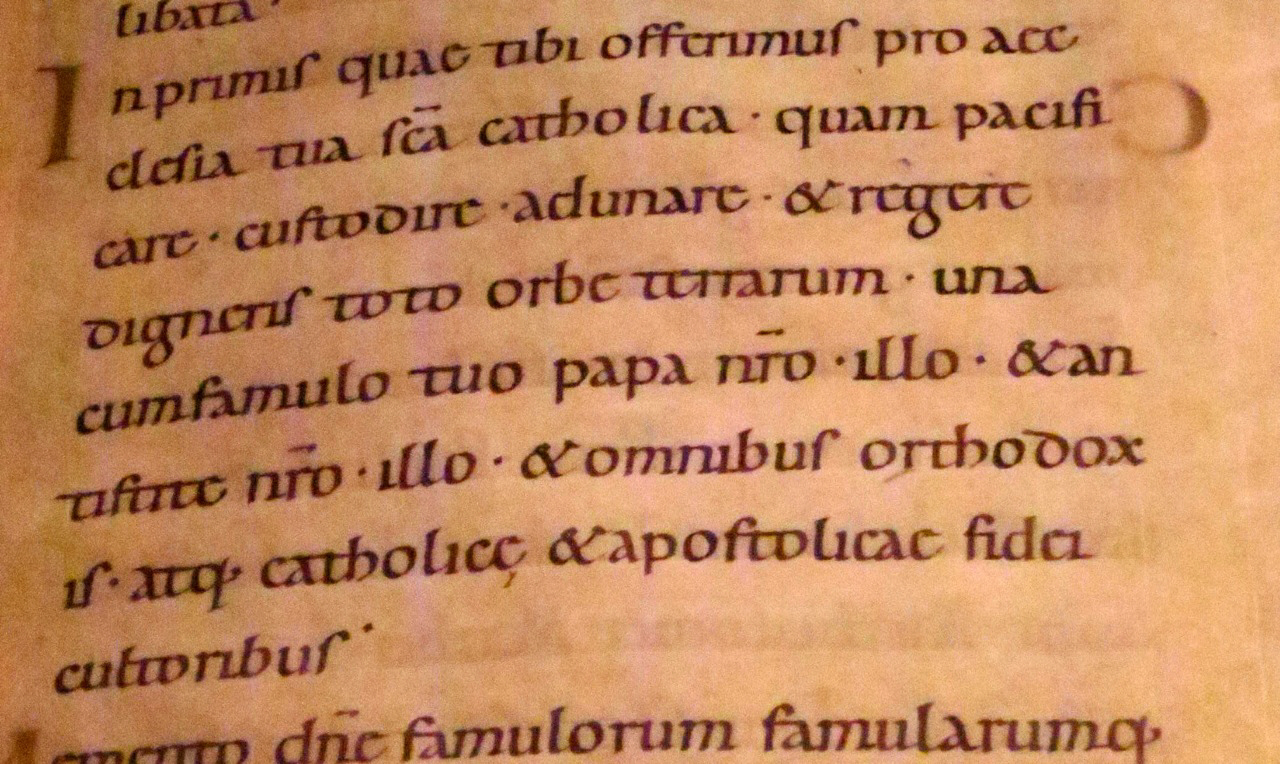In the diocese of Altoona-Johnstown, Bishop Mark L. Bartchak 1) has reportedly limited the celebration of the Traditional Mass to Sundays and limited or prohibited the celebration of other sacraments in the traditional form. (NB: I cannot find on the diocesan website the letter, referred to in the press, that sets forth these rules.) In response, the Traditionalist faithful have opened discussions with the FSSPX. From the local press:
The new outcry over the loss of Latin services comes after Bishop Mark L. Bartchak limited “old rite” Masses to Sundays and instructed clergy to administer sacraments, including baptisms and funerals in English.
Local Traditionalists denounced these restrictions – but, more positively, have initiated meetings with representatives of the FSSPX to preserve access to the Mass and sacraments in the Traditional forms:
The visit by Father Richard Boyle of the Society of St. Pius X priory of the Blessed Virgin Mary in Warners, N.Y., is being sponsored by several local Latin Mass societies, including those in Spring Cove, Johnstown, State College, University Park, and from as far away as Indiana and Venango counties and Allegany County in Maryland.
Boyle will spend his two-day visit to Centre and Blair counties offering pastoral support and providing information.
The first meeting will be held at 7 p.m. Tuesday at The Graduate Hotel in State College. There, Boyle will offer a presentation on the SSPX and a public question and answer session as well as private sacramental confessions and private spiritual conversations, according to Ryan Carey, president of the State College Latin Mass Society.
At 6 p.m. Wednesday, at the Altoona Grand Hotel, Boyle will celebrate a sung Mass in the Traditional Latin Rite and hear sacramental confessions.
(Aaron) Clouse (23) said he hopes the meetings encourage the bishop to “return things to the way things were (prior to July) and he doesn’t try to suppress us.”
Members of the Latin Mass societies, Carey said, requested the visit “to secure their access to the traditional rites and sacraments of the Catholic Church (and) is in response to the rigid, unjust, unpastoral and spiteful cancellation of all Old Rite sacraments in the diocese and the arbitrary limiting and suppression of the Traditional Latin Mass,” according to a letter inviting the faithful to attend the gatherings.
Carey said the public meetings are in response to failed efforts to speak with Bartchak about their concerns.
ADDITIONAL INFORMATION:
The restrictions imposed in the Altoona diocese apparently are not contained in a single document but are the sum of directives by the bishop to his clergy. For a concrete example of the operation of Traditionis Custodes in this diocese see the moving report of an abruptly cancelled Requiem Mass and the refusal of Bishop Bartchak to “dialogue” about his decision. Fuentes, Victor, The Bishop Cancelled the Memorial Requiem for my Mother, OnePeterFive 9/21/2021. See also the facebook page of the State College Latin Mass Society. (Penn State is located in the Altoona diocese)
- Bishop Bartchak also voted to postpone discussion among the bishops of “eucharistic worthiness.”
